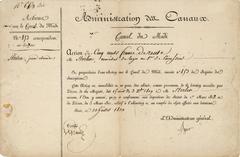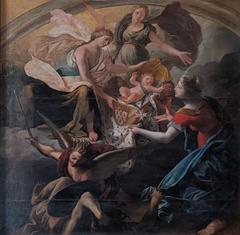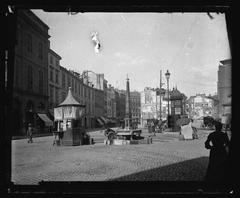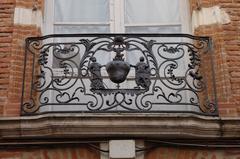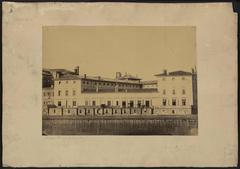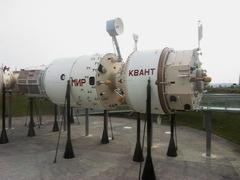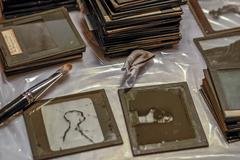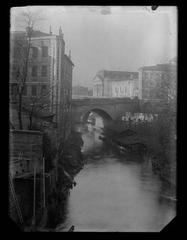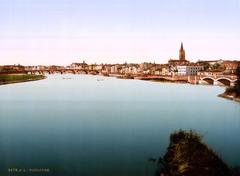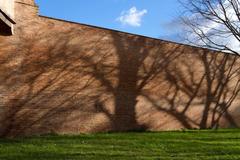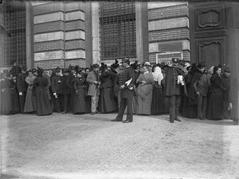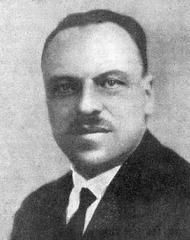
Visiting the Cemetery of Terre Cabade, Toulouse, France: An In-Depth Guide
Date: 04/07/2025
Introduction: Terre Cabade, Toulouse’s Monumental Cemetery
Perched atop the Redoutes hill in Toulouse’s Marengo-Jolimont district, the Cemetery of Terre Cabade is the city’s largest and most prominent burial ground. Since its foundation in 1840, this vast necropolis has served not only as a final resting place for thousands but also as a living testament to Toulouse’s evolving history, art, and social fabric. Conceived by architect Urbain Vitry, Terre Cabade is a quintessential garden cemetery, blending neoclassical, romantic, and neo-Egyptian elements amid landscaped greenery inspired by English garden traditions. Today, visitors can wander its 33 hectares, exploring monuments that chronicle the city’s remarkable past and diverse community (Toulouse Tourisme; Petit Futé; Actu.fr).
Nicknamed the “Père Lachaise of Toulouse,” the cemetery is both a place of remembrance and an open-air museum. Among its 28,000 tombs lie the remains of notable figures such as acrobat Jules Léotard, industrialist Aristide Bergès, and schoolteacher Hélène Soutade. The site also features sections for Jewish and Protestant communities, as well as poignant war memorials like the Crypt of the Poilus. Open daily and free to enter, Terre Cabade is easily accessible by public transport, with guided tours and special events offered throughout the year. This guide provides an in-depth look at its history, highlights, practical information, and visitor tips to ensure a meaningful visit.
Contents
- Introduction
- Visiting Hours, Tickets, and Accessibility
- Historical Overview
- Origins and Development
- Architectural Features and Layout
- Notable Burials and Memorials
- Cultural and Social Significance
- Practical Visitor Information
- Frequently Asked Questions (FAQ)
- Plan Your Visit
- Conclusion
Visiting Hours, Tickets, and Accessibility
Opening Hours:
The cemetery is open daily from 8:00 AM to 6:00 PM (hours may vary seasonally; always check the official website before your visit).
Entry Fee:
Admission is free for all visitors.
Accessibility:
Key areas are paved and accessible for visitors with limited mobility. Some older sections have uneven ground; comfortable footwear is recommended. An electric vehicle service is available for those with mobility challenges (Metropole Toulouse).
Getting There:
Located in the Marengo-Jolimont district, the cemetery is well served by the Marengo-SNCF metro station and several bus lines. Tisséo shuttle buses operate on Tuesdays and Fridays. Limited parking is available nearby, but public transport is recommended (Outdooractive).
Guided Tours & Events:
Seasonal guided tours and special events—such as the “Printemps des Cimetières”—offer deep insights into the cemetery’s history and art. Tours for groups can be reserved via the Toulouse Tourist Office (Toulouse Tourisme).
Historical Overview of Terre Cabade Cemetery
Origins and Development
In the early 19th century, public health reforms and Napoleonic laws mandated the relocation of cemeteries outside city centers. Toulouse responded by commissioning Urbain Vitry to design a new burial ground, inspired by the garden cemeteries of Paris and England. Officially opened in 1840, Terre Cabade initially spanned 10 hectares and gradually expanded to 33 hectares as the city’s main necropolis (actu.fr).
The cemetery’s design reflected contemporary attitudes toward death, commemoration, and urban planning. Over time, it became a symbol of secularization and civic integration, welcoming people from all walks of life, faiths, and backgrounds (toulouse-tourisme.com).
Architectural Features and Layout
Terre Cabade’s entrance is marked by neo-Egyptian obelisks and pavilions, built of local brick and adorned with gilded pyramidions—a nod to the 19th-century Egyptomania (landrucimetieres.fr). Inside, gently winding paths, mature trees, and panoramic viewpoints create an inviting, contemplative atmosphere. Monuments range from elaborate mausoleums to simple headstones, each highlighting a facet of Toulouse’s social and artistic history.
Key features include:
- Neo-Egyptian Entrance: Striking obelisks and palm-form capitals.
- Family Vaults & Chapels: Showcasing neoclassical, romantic, and Art Nouveau styles.
- Monuments aux Morts: Memorials dedicated to war victims.
- Greek Temple Tomb: Aristide Bergès’ mausoleum, styled as a miniature Greek temple.
- Salonique Annex: An extension of the cemetery, home to additional graves and memorials (fr.wikipedia.org).
Notable Burials and Memorials
Terre Cabade is the resting place of many prominent figures, reflecting Toulouse’s diverse and storied past:
- Jules Léotard: Acrobat and originator of the leotard.
- Aristide Bergès: Industrial pioneer, commemorated with a grand Greek temple-style tomb.
- Léontine de Villeneuve (“L’Occitanienne”): Literary muse to Chateaubriand.
- Hélène Soutade (“Sainte-Hélèna”): Beloved schoolteacher, venerated locally.
- Dominique Baudis: Former mayor and journalist.
- Just Fontaine: Renowned footballer.
The “carré des noyés” (Drowned’s Square) memorializes victims of Garonne River floods. The “Crypt of the Poilus” in the Salonique annex honors 1,709 WWI soldiers, including Muslim and Indochinese combatants—a significant testament to Toulouse’s multicultural heritage (actu.fr).
Cultural and Social Significance
Terre Cabade encapsulates Toulouse’s collective memory and is central to the city’s identity. Annual commemorations—such as All Saints’ Day and ceremonies for resistance fighters—underscore its civic importance. The cemetery’s sections for Jewish and Protestant communities highlight its inclusive, pluralistic character (IAJGS Cemetery Project).
Its monuments, funerary art, and landscaping reflect the changing tastes, beliefs, and social structures of Toulouse over nearly two centuries. The cemetery also supports biodiversity and sustainability efforts, further integrating it into the urban environment (Petit Futé).
Practical Visitor Information
- Hours: Daily, 8:00–18:00 year-round (Metropole Toulouse).
- Location: 1 avenue du Cimetière, Toulouse 31000, France.
- Entry Fee: Free.
- Guided Tours: Available via Toulouse Tourist Office; group tours start at €198 (Toulouse Tourisme).
- Accessibility: Electric vehicle available for those with mobility challenges; inquire at the entrance.
- Transport: Tisséo shuttle service and metro nearby; parking available (Outdooractive).
- Photography: Allowed, but respect the privacy of mourners.
- Facilities: Benches along main paths; limited restrooms at the entrance.
- Etiquette: Maintain quiet, respectful behavior; service animals only.
- Nearby Attractions: Jardin des Plantes, Musée des Augustins, Canal du Midi.
Visitor Etiquette and Experience Tips
- Dress modestly and wear comfortable shoes for walking.
- Bring water, especially in warm months; no shops or cafés on site.
- Explore early or late in the day for the best light and tranquility.
- Do not touch or move grave markers or offerings.
- Remain discreet when taking photographs, avoiding mourners and ceremonies.
Frequently Asked Questions (FAQ)
Q: What are the visiting hours?
A: Daily, 8:00–18:00; check for seasonal variations.
Q: Is there an entrance fee?
A: No, admission is free.
Q: Are guided tours available?
A: Yes, via the Toulouse Tourist Office; booking required for groups.
Q: Is the cemetery accessible for people with reduced mobility?
A: Main paths are accessible; electric vehicle service available.
Q: Can I get there by public transport?
A: Yes, via metro, bus, and Tisséo shuttles.
Q: Are pets allowed?
A: Only service animals.
Q: Is photography permitted?
A: Yes, but be respectful.
Enhancing Your Visit
- Download the Audiala app for audio guides and up-to-date visitor info.
- Check the Toulouse Tourist Office for current tour schedules and special events.
- Explore related articles on Toulouse’s heritage and travel tips for a richer experience.
Suggested Visuals:
- Photographs of the neo-Egyptian entrance, Greek temple tomb, and tranquil pathways.
- Interactive map highlighting key monuments and sections.
- Images with alt text such as “Terre Cabade Cemetery mausoleum in Toulouse.”
Conclusion
The Cemetery of Terre Cabade is a unique blend of history, art, and community memory, offering a peaceful yet profound experience. Whether you are fascinated by funerary art, interested in the stories of Toulouse’s prominent citizens, or seeking a serene place for reflection, Terre Cabade is an essential stop on any cultural itinerary. Its accessibility, guided tours, and integration with the city’s heritage make it an exceptional destination for visitors of all backgrounds. Leverage official resources, plan ahead, and take time to appreciate the tranquil atmosphere and rich historical tapestry this remarkable site offers (Metropole Toulouse; Outdooractive; Toulouse Tourisme).
Sources and Further Reading
- Toulouse Tourisme – Terre Cabade Cemetery Guide (2025)
- Petit Futé – Terre Cabade Cemetery
- Toulouse Tourisme – Visiting Information (2024)
- Outdooractive – Terre Cabade Cemetery Highlights
- Metropole Toulouse – Official Cemetery Information
- Actu.fr – Toulouse Cemetery Secrets
- Wikipedia – Cimetiere de Terre-Cabade
- L’Opinion – Printemps des Cimetières Event
- IAJGS Cemetery Project – Terre Cabade



